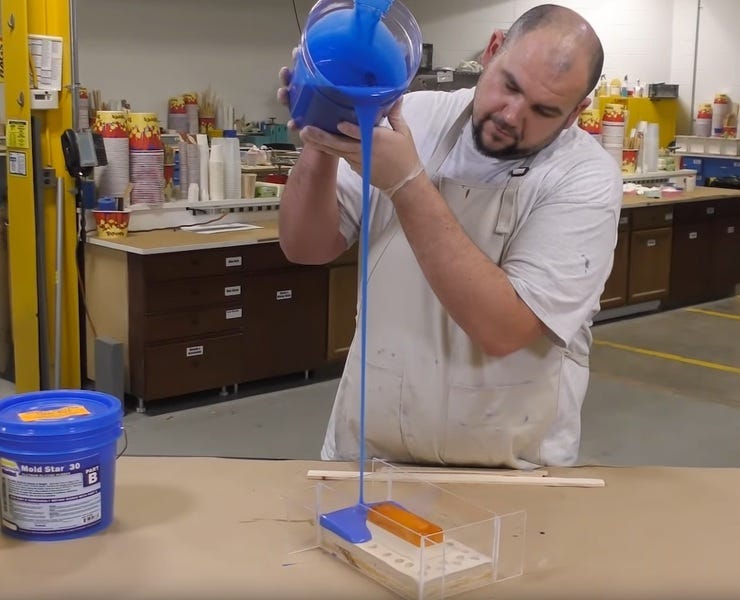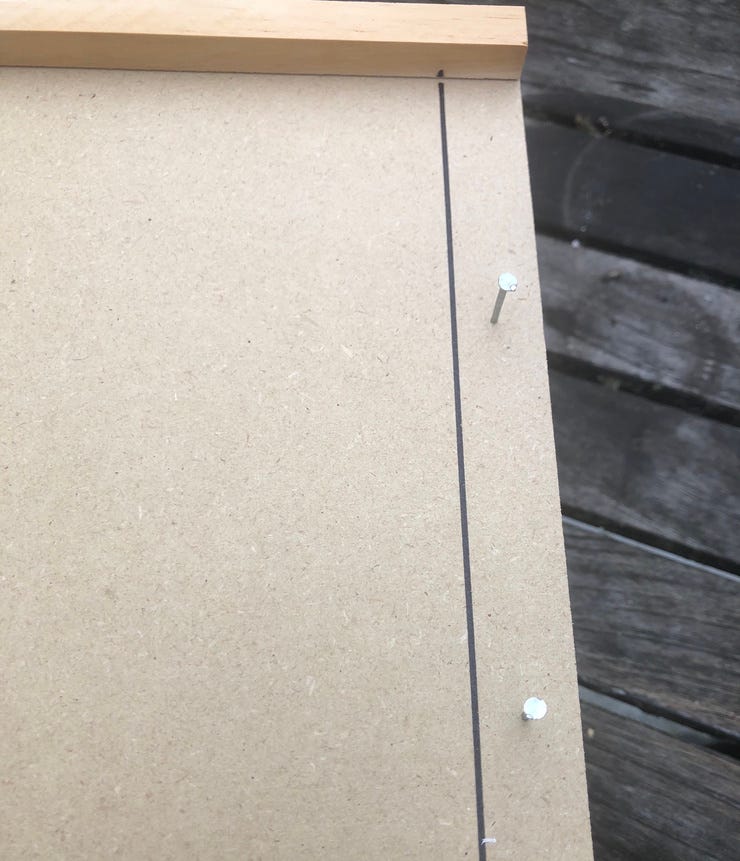Gareth's Tips, Tools, and Shop Tales - Issue #26
Molding and Casting a Discontinued Plastic Part
On the Smooth-On YouTube channel, Milo demonstrates how to mold and cast difficult-to-replace plastic parts, in this case, a tail light lens cover that's no longer available. There are many great molding and casting tips here. Above, Milo shows how greatly elongating the distance of the pour helps to stretch and break any air bubbles in the mold mix. One thing shown that I think is misleading is the size of the mold box. I've been told by other molding and casting pros that you really only need about 1" of mold material around your object. Smooth-On is obviously trying to push their product here.
Dividing Up Intimidating Projects
This weekend, I finished a project for my girlfriend, putting together a flat-packed 5-drawer chest with dozens (and dozens) of parts and hundreds of pieces of hardware. We've all been there. I did the assembly over three days and that reminded me of how much more pleasant a daunting project can be when you take your time and divide up your work sessions. If I'd done this in one 5-hour session, I know I would've gotten tired, frustrated, and cranky. Doing it in three sessions made it relaxed, pleasant, and a fun project to do with (and for) my sweetheart.
Marking Your Nailing Target
Working on the above chest of drawers, on the first few drawer bottoms, I tried to eyeball the width of the particle board drawer back beneath and one of the nails curved and came through the back piece. It's often hard to guess the width of the underlying board you're trying to hit and particle board is particularly dense (and these nails were super cheap), so nails bending and breaking the surface is a real hazard. I stopped, measured and marked the width of the underling board, and all was fine from there.
Art and Engineering Need Each Other
My pal, Steven Roberts, the "high-tech nomad," dropped a quote many years ago that has become a central pillar of my approach to thinking and creating: "Art without engineering is dreaming. Engineering without art is calculating." Similarly, the cyberneticist Gregory Bateson talked about the need for a balance of "rigor and imagination" in one's endeavors. Too often, I think there's a tendency to overdevelop one of these muscles and not the other. I started out on more of the dreaming side of things and have spent much of the last three decades learning to balance that with a deeper, hands-on understanding of the physical sciences side of things. Where do you fall in this mix? What part of this equation do you need to work on?
Laser Printing Circuit Boards
There are a number of ways to create non-etched printable circuits using conductive ink and laser or ink jet printers. Here is a method by maker Rich Olson from a few years ago that uses a laser printer and silver conductive single-part heat-cure epoxy. Rich has detailed notes of the process on his website.
Toys!
I recently ordered from American Science and Surplus online and it came with a paper catalog. I had no idea they still printed one. I love print supply catalogs and miss them. The SciPlus catalog is always a treat, with fun, silly headlines and product descriptions, and all sorts of surplus items, toys, tools, and gag gifts. I used to buy most of my Christmas gifts from this catalog. I might do that again this year. BTW: I bought the $99 Testors Airbrush Kit that was surplused at $24.50. Don't bother. It's GARBAGE.






![When life gives you lemons... [spotted on FB with no attritution] When life gives you lemons... [spotted on FB with no attritution]](https://substackcdn.com/image/fetch/$s_!a_2_!,w_1456,c_limit,f_auto,q_auto:good,fl_progressive:steep/https%3A%2F%2Fsubstack-post-media.s3.amazonaws.com%2Fpublic%2Fimages%2F460f8225-0d6a-4497-ac4f-ed52918ea5e3_740x550.jpeg)